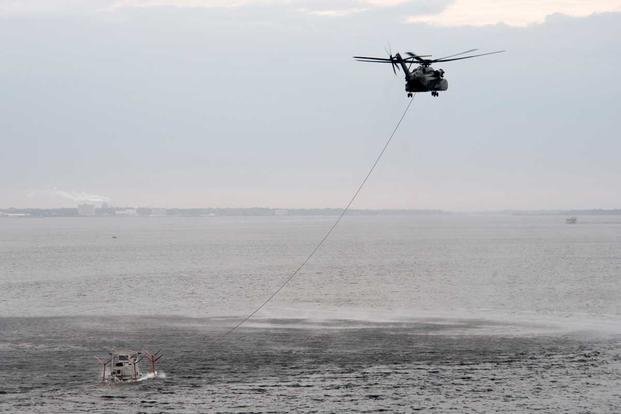CAMP NAHA, Japan -- U.S. Marines with the Marine Heavy Helicopter Squadron 462 of the III Marine Expeditionary Force, worked alongside the Japan Self-Defense Force and Okinawa Emergency Services in the Churashima Rescue Exercise recently.
The annual exercise, hosted by the 15th Brigade, Western Army, Japan Ground-Self Defense Force, prepares emergency responders for a swift reaction to the disaster effects of a trench-type earthquake.
“This training today simulated a potential major earthquake and following tsunami within the Okinawa Prefecture,” said JGSDF Lt. Col. Naruhito Seo, 15th Brigade Headquarters. “In close cooperation with prefectural disaster response organizations, both civilian and defense, we practiced how information is shared, where we need to improve, and what we can accomplish next time more fully.”
This was the first year Marines participated in the exercise, supporting mutual preparation and demonstrating the importance of interoperability.
“The exercise is exactly the type of mission that requires JSDF and the Marine Corps cooperation and coordination,” said Maj. Thai N. Nguyen, G-5 planner, MCIPAC. “When this is accomplished in advance of a disaster, it saves valuable time, resources, and lives.”
Marines provided support by supplying a CH-53E Super Stallion and its crew to help in the retrieval and transportation of role-player casualties. The role players were transported from a mock disaster zone on Marine Corps Air Station Futenma and were transferred to Camp Naha to receive simulated medical care.
The Super Stallion is ideal for mass casualty evacuations due to its heavy-lift capabilities, according to Maj. Carlos Chavez, a pilot with HMH 462.
“Disasters can't be coped with easily. Fortunately, there are U.S. forces, equipment and personnel here which can add to our capability,” said Seo. “The use of their specialties in disaster response is appreciated.”
After being invited to participate in the exercise by the 15th BG, Marine liaison officers with MCIPAC immediately began working with their Japanese counterparts to coordinate the planning and execution of the July 23 event. The Marine Corps saw this as an excellent opportunity to build cohesion among the two forces, according to Nguyen.
“U.S. and forces have a long history of working together, and we value every opportunity to learn from one another and to maintain the readiness of our militaries,” said Nguyen. “Marine forces will continue to train bilaterally with JGSDF and multilaterally with U.S. allies throughout the Asia-Pacific to enhance regional stability.”



























